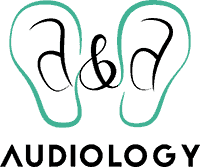- The Connection Between Hearing Loss and Dementia - July 30, 2024
- The Advantages of Rechargeable Hearing Aids - July 16, 2024
- How to Enjoy Music Festivals While Protecting Your Hearing - July 3, 2024
When you’re out and about, try and count the number of people wearing earbuds or headphones. Earbuds have become our favorite way of listening to music, podcasts and watching our favorite TV shows and movies while on the go. However, new research indicates that we will need to be more cautious when using these devices than we previously believed.
Using earbuds may be harmful to your hearing.
Professors at Northern Illinois University (NIU) have long been concerned about students who spend so much time with their earbuds listening to music. Their comments and concerns have been published in the university’s Northern Star, a student newspaper. Professors are concerned about earbuds, not because students are distracted from studying, but because they can cause severe and constant hearing loss – including in children.
NIU professors aren’t the only ones educating young people about the risks of earbuds’ improper use. In reality, according to a 2015 World Health Organization survey, over 12% of young people listen to music at unhealthy levels regularly. Personal listening devices and earbud use placed an estimated 1.1 billion young people at risk of hearing loss.
The potential danger of earbuds
To comprehend how often listening to music can affect one’s hearing, one must first understand how we hear.
The ear canal is the first point of entry for sounds. The sounds are translated into an electrical signal by delicate and microscopic hair cells. These electrical signals are then sent to our brain, where our brain transforms them into audible sounds. It’s a pretty fantastic process, particularly when you know that the whole thing happens in nanoseconds.
But 85 decibels of noise can permanently destroy the delicate hair cell over time. These hair cells can never be healed once they have been destroyed. They’re gone forever. This is compounded because earbuds sit so deep down the ear canal that the vibrations are blasted straight into the eardrum. We hope it’s now easier to see why they’re considered so dangerous.
What is the volume of earbuds and headphones?
Most earbuds and headphones can produce sounds at a maximum volume of about 110 dBA. This is the equivalent of putting a power saw between each of your ears. It’s also important to note that hearing loss can occur due to a variety of listening situations. Let’s say you use earbuds at a high volume, work in a loud setting such as a pub, and regularly attend concerts. You are exposing the ears to high noise levels for several hours of the day in this situation.
How to protect your ears
To protect your ears, you don’t have to ditch your earbuds and turn your back on music. There are some steps to take to make sure you’re listening to your earbuds at a comfortable level.
Setting your earbuds to the frequency you usually listen to and holding them at arm’s length away is the best way to tell if they’re too loud. Your music is too noisy if you can hear it from this distance.
The 60/60 rule is also recommended by experts. The 60/60 rule states that earbud users should listen for no more than 60 minutes a day at 60% of their device’s maximum volume.
Noise-canceling headphones might be a good investment for you if you use your earbuds to block out the sounds around you. They are expensive, but they use technology to block out outside noise while allowing you to listen to music at comfortable volume levels. If you don’t have to treat hearing loss at a young age, noise-canceling headphones will pay for themselves tenfold!
If you’ve noticed any of the early symptoms of hearing loss, regardless of your age or whether you use earbuds, contact our friendly team today to arrange a hearing evaluation. If you’re unsure if you have hearing loss, check for symptoms like hearing but not recognizing conversations, being lost in group conversations, tinnitus (ringing or humming in the ear), or concern from friends and family.

